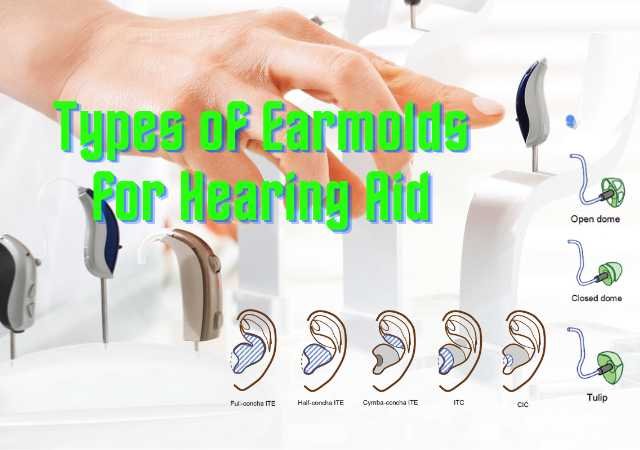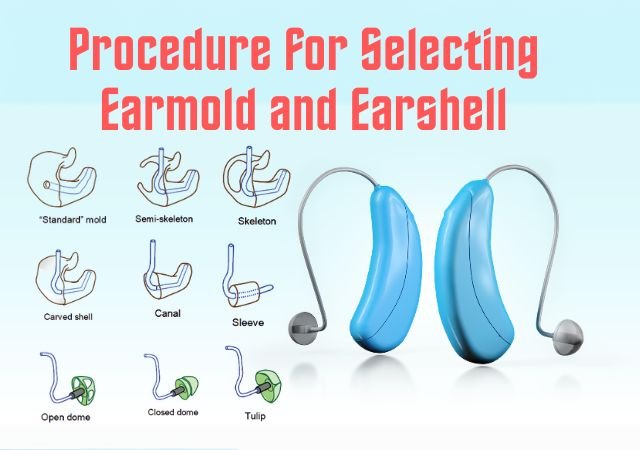 Cookie Bite Hearing Loss: Reverse | Dementia | Best Hearing Aids – “Cookie bite” hearing loss is a distinctive pattern of auditory impairment identified through audiograms, where a characteristic dip or notch appears in the mid-frequency range, resembling the shape of a cookie with a bite taken out. This article explores the nuances of cookie bite hearing loss, delving into its audiometric configurations, potential genetic associations, and the emergence of its reverse counterpart, the “reverse cookie bite” hearing loss. Recognizing the impact of such hearing patterns on daily life, we also discuss the considerations surrounding disability classifications, the connection between cookie bite hearing loss and dementia, and practical insights into choosing the best hearing aids tailored to this specific auditory profile.
Cookie Bite Hearing Loss: Reverse | Dementia | Best Hearing Aids – “Cookie bite” hearing loss is a distinctive pattern of auditory impairment identified through audiograms, where a characteristic dip or notch appears in the mid-frequency range, resembling the shape of a cookie with a bite taken out. This article explores the nuances of cookie bite hearing loss, delving into its audiometric configurations, potential genetic associations, and the emergence of its reverse counterpart, the “reverse cookie bite” hearing loss. Recognizing the impact of such hearing patterns on daily life, we also discuss the considerations surrounding disability classifications, the connection between cookie bite hearing loss and dementia, and practical insights into choosing the best hearing aids tailored to this specific auditory profile.
The intricacies of cookie bite hearing loss extend beyond a mere descriptive term, prompting an exploration into the genetic underpinnings, potential disabilities, cognitive implications, and the technological interventions available for individuals affected by this unique auditory profile. Understanding these facets contributes to a comprehensive perspective on the challenges and solutions associated with cookie bite hearing loss, empowering individuals to make informed decisions about their auditory health.
Cookie Bite Hearing Loss
“Cookie bite” hearing loss refers to a specific pattern of hearing impairment that is typically identified in audiograms, which are graphical representations of a person’s hearing ability across different frequencies. This term describes a characteristic dip or notch in the mid-frequency range, resembling the shape of a bite taken out of a cookie.
In a typical audiogram, the horizontal axis represents different frequencies or pitches of sound, while the vertical axis represents the intensity or volume of sounds. A “cookie bite” configuration on the audiogram indicates that an individual has difficulty hearing sounds in the mid-frequency range, while their hearing may be relatively better in low and high frequencies.
This pattern is often associated with genetic or hereditary forms of sensorineural hearing loss, where there may be a genetic predisposition to damage in the inner ear’s hair cells or the auditory nerve. However, it’s important to note that the term “cookie bite” is a descriptive label and not a medical diagnosis in itself. If you suspect any hearing loss, it is crucial to consult with an audiologist or healthcare professional for a comprehensive evaluation and appropriate guidance.
Cookie Bite Audiogram

Cookie Bite Audiogram
A discernible decline in the ability to hear sounds within the mid-frequency range, usually occurring between 1 kHz and 2 kHz.
Finally, the Cookie Bite Audiogram is distinguished by a decline in sensitivity within the mid-frequency range. This particular pattern may have a hereditary basis and is commonly linked to congenital hearing loss.
As stated by Van Camp and Smith (2013), non-syndromic hearing loss inherited as a dominant (DFNA) trait, which maps to one of the 22 autosomal chromosomes, is genetically diverse, encompassing a minimum of 64 loci and over 25 identified genes. Various permutations exist, including hearing loss commencing in the low frequencies (e.g., DFNA1 and DFNA6/14/23) or mid frequencies characterized by a “cookie-bite” structure (e.g., DFNA10).
Postlingual sensory/neural hearing loss typically emerges between the second and fourth decades of life, often presenting with an initial cookie-bite configuration or when the medium and high frequencies are affected.
Reverse Cookie Bite Hearing Loss
Reverse cookie bite hearing loss, also known as low-frequency cookie bite hearing loss or reverse slope hearing loss, is a type of hearing impairment characterized by a specific pattern of hearing loss across different frequencies. Traditional cookie bite hearing loss refers to a configuration where there is a reduction in hearing sensitivity in the mid-frequency range, creating a dip or “bite” in the audiogram.
In reverse cookie bite hearing loss, the pattern is inverted. Instead of a dip in the mid-frequency range, there is a dip in the low-frequency range, often accompanied by relatively normal or better hearing in the mid and high frequencies. This unique audiometric pattern resembles the shape of an inverted cookie bite, leading to the term “reverse cookie bite.”
Hearing loss can be classified into various configurations based on the affected frequencies, and the term “cookie bite” is used to describe a specific pattern where mid-frequency hearing is compromised. Reverse cookie bite hearing loss is less common than the regular cookie bite configuration, and its distinct pattern may present challenges in hearing rehabilitation and communication. Treatment options, such as hearing aids, may be tailored to address the specific frequency characteristics of reverse cookie bite hearing loss.
Reverse Cookie Bite Audiogram

Reverse Cookie Bite Audiogram or Saucer Audiogram
The audiogram displaying a Reverse Cookie Bite pattern exhibits a saucer-like shape, indicating enhanced hearing sensitivity within middle frequencies and diminished sensitivity at the extremes. This pattern may be linked to specific medical conditions, necessitating additional exploration.
Enhanced hearing sensitivity is noticeable within the middle frequencies, typically ranging from 1 kHz to 2 kHz. As you shift towards lower and higher frequencies, hearing sensitivity gradually diminishes. The graph’s overall shape resembles that of a saucer, reflecting superior hearing capabilities in the middle frequencies.
Is Cookie Bite Hearing Loss a Disability?
Cookie bite hearing loss refers to a specific pattern of hearing loss where there is a dip in hearing sensitivity in the mid-frequency range, creating a notch-like shape on an audiogram. This term is often associated with genetic or hereditary hearing loss.
Whether cookie bite hearing loss is considered a disability depends on the severity of the condition and how it impacts an individual’s ability to function in daily life. In many cases, individuals with mild or moderate cookie bite hearing loss may not experience significant difficulties and may not be considered disabled.
However, if the hearing loss is severe and significantly affects a person’s ability to communicate, understand speech, or participate in normal activities, it may be considered a disability. The determination of disability often involves a comprehensive assessment of the individual’s overall functioning and the extent to which the hearing loss impairs their ability to engage in activities such as work, education, and social interactions.
It’s important to note that disability classifications and accommodations can vary by jurisdiction, and individual circumstances may play a role in determining whether someone is considered disabled due to cookie bite hearing loss. Seeking guidance from healthcare professionals, audiologists, and relevant authorities can provide more specific information based on individual cases and local regulations.
Cookie Bite Hearing Loss and Dementia
Cookie bite hearing loss refers to a specific pattern of hearing loss where there is a noticeable dip in hearing sensitivity in the mid-frequency range, resembling the shape of a “cookie bite” taken out of an audiogram. This type of hearing loss typically affects the ability to hear sounds in the frequencies associated with speech, making it challenging to understand conversations, especially in noisy environments.
The connection between cookie bite hearing loss and dementia is an area of ongoing research, and there is no conclusive evidence establishing a direct causal relationship. However, several studies have explored the potential links between hearing loss and cognitive decline.
Cognitive Load
Individuals with untreated hearing loss may experience an increased cognitive load as they struggle to comprehend speech and make sense of auditory information. This additional cognitive effort could contribute to mental fatigue and potentially impact cognitive functions over time.
Social Isolation
Hearing loss can lead to social isolation and withdrawal from social activities. Social engagement is crucial for cognitive health, and isolation may be a factor in the development or progression of dementia.
Brain Atrophy
Some studies suggest that untreated hearing loss may be associated with accelerated brain atrophy. The brain’s ability to process auditory information is linked to cognitive functions, and the lack of auditory stimulation could contribute to structural changes in the brain.
Common Underlying Factors
Both hearing loss and dementia share common risk factors, such as age, genetics, and cardiovascular health. Addressing these risk factors may have a positive impact on both hearing and cognitive function.
It’s important to note that while there is an association between hearing loss and dementia, the exact nature of this relationship is complex and not fully understood. Nonetheless, seeking timely treatment for hearing loss through the use of hearing aids or other interventions may help mitigate potential cognitive impacts and improve overall quality of life. Regular check-ups with healthcare professionals, including audiologists and neurologists, can provide valuable insights into individual cases.
Best Hearing Aids for Cookie Bite Hearing Loss
Choosing the best hearing aids for cookie-bite hearing loss involves considering specific features that address the unique frequency pattern associated with this type of hearing loss. Cookie-bite hearing loss typically affects the ability to hear mid-range frequencies, while low and high frequencies may be relatively unaffected.
Here are some features to look for in hearing aids for cookie-bite hearing loss:
Wide Frequency Range
Choose hearing aids that have a wide frequency range to cover the mid-range frequencies where cookie-bite hearing loss is most prominent.
Programmability
Opt for programmable hearing aids that allow for customization based on your specific hearing profile. This flexibility is crucial for tailoring the amplification to your unique needs.
Compression and Frequency Shaping
Look for hearing aids with compression and frequency shaping capabilities. These features help to amplify soft sounds while ensuring loud sounds are not uncomfortable, providing a balanced listening experience.
Directional Microphones
Consider hearing aids with directional microphones to enhance speech clarity, especially in noisy environments. This can be beneficial for those with cookie-bite hearing loss who may struggle with speech comprehension.
Feedback Suppression
Feedback suppression technology is essential to prevent whistling or feedback noises that can occur with amplification. This feature improves the overall comfort and effectiveness of the hearing aids.
Bluetooth Connectivity
Some modern hearing aids come with Bluetooth connectivity, allowing you to connect them to your smartphone, TV, or other devices. This can enhance your listening experience and provide additional control over your hearing aids.
Comfort and Fit
Ensure that the hearing aids are comfortable to wear for extended periods. Custom-molded options may provide a better fit and increased comfort.
Battery Life
Consider the battery life of the hearing aids, especially if you prefer a longer-lasting option. Some hearing aids come with rechargeable batteries, which can be convenient.
Trial Period
Many hearing aid providers offer a trial period. Take advantage of this to ensure the chosen hearing aids meet your expectations and improve your listening experience.
It’s important to consult with an audiologist who can assess your specific hearing needs and recommend hearing aids tailored to your hearing profile. Regular follow-up appointments with the audiologist can also help fine-tune the settings for optimal performance.
Conclusion
In conclusion, “cookie bite” hearing loss, characterized by a distinctive dip in mid-frequency sensitivity on audiograms, serves as a notable pattern associated with various forms of sensorineural hearing impairment. While the term itself is descriptive, its recognition aids in understanding genetic predispositions and hereditary factors linked to specific audiometric configurations.
The exploration of “reverse cookie bite” hearing loss further diversifies our comprehension of auditory challenges, emphasizing the importance of tailored interventions for the unique frequency patterns exhibited. The intricate relationship between hearing loss and cognitive decline, particularly dementia, remains an ongoing area of study, highlighting the potential impact of untreated hearing loss on cognitive functions and overall quality of life.
Determining whether cookie bite hearing loss qualifies as a disability involves a nuanced evaluation of its severity and its impact on daily activities. The consideration of individual circumstances and local regulations underscores the need for consultation with healthcare professionals and relevant authorities for accurate assessments and appropriate accommodations.
For individuals grappling with cookie-bite hearing loss, selecting the right hearing aids becomes crucial. The emphasis on features such as wide frequency range, programmability, and advanced technologies like directional microphones and feedback suppression aligns with the goal of optimizing hearing experiences and improving communication.
In navigating the complexities of hearing loss, staying informed about advancements in audiometric understanding, seeking timely interventions, and fostering collaboration with healthcare professionals contribute to a comprehensive approach for addressing the challenges posed by cookie bite hearing loss.
FAQs about Cookie Bite Hearing Loss: Reverse | Dementia | Best Hearing Aids
1. Is Cookie Bite Hearing Loss a Disability?
Whether cookie bite hearing loss is considered a disability depends on the severity of the condition and its impact on an individual’s daily functioning. Mild or moderate cases may not be disabling, but severe cases affecting communication and normal activities may be considered a disability. Determinations vary by jurisdiction, and guidance from healthcare professionals and relevant authorities is recommended.
2. Is cookie bite hearing loss progressive?
The article does not explicitly mention whether cookie bite hearing loss is progressive. It provides information on the configuration and patterns associated with cookie bite hearing loss but does not address the progression of the condition over time.
3. How common is cookie bite hearing loss?
The prevalence of cookie bite hearing loss is not specified in the article. While it describes the characteristic dip in mid-frequency hearing associated with this pattern, it does not provide information on the frequency of occurrence within the population.
4. Is cookie bite hearing loss hereditary?
Yes, cookie bite hearing loss is often associated with genetic or hereditary forms of sensorineural hearing loss. The article mentions that this pattern is commonly linked to congenital hearing loss with a hereditary basis, indicating a genetic predisposition to damage in the inner ear’s hair cells or the auditory nerve.
5. How can I choose the best hearing aids for cookie-bite hearing loss?
Choosing the best hearing aids involves considering features tailored to the unique frequency pattern of cookie-bite hearing loss. Recommendations include wide frequency range, programmability, compression and frequency shaping, directional microphones, feedback suppression, Bluetooth connectivity, comfort and fit, battery life, and utilizing trial periods. Consultation with an audiologist is advised for personalized recommendations and adjustments.
References:
- Essentials of Audiology – Stanley A. Gelfand, PhD (Book)
- Auditory Diagnosis Principles and Applications – Shlomo Silman & Carol A. Silverman (Book)
- Handbook of Clinical Audiology – Jack Katz (Book)
- Introduction to Audiology – Frederick N.Martin (Book)







Can u send handout of aphasia and therapy plan and implementation of techniques